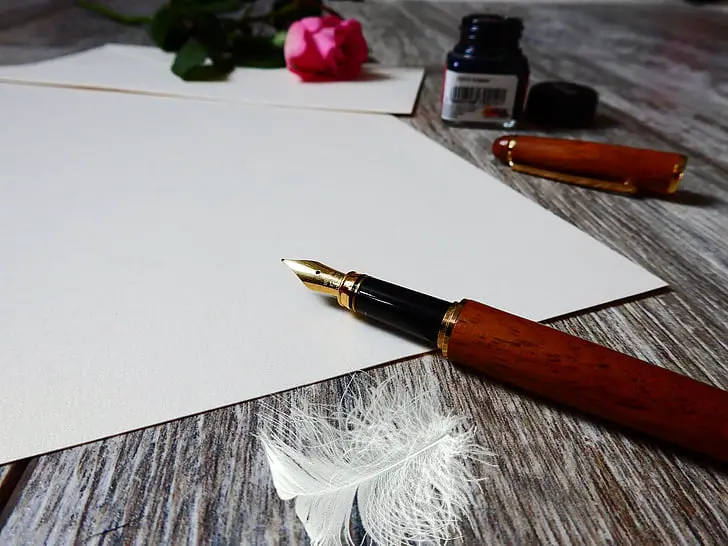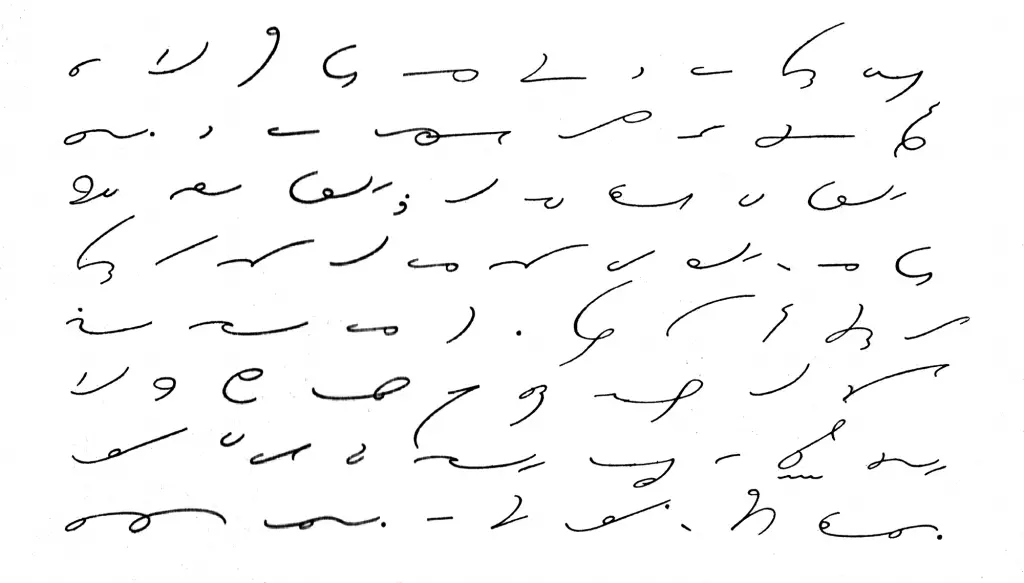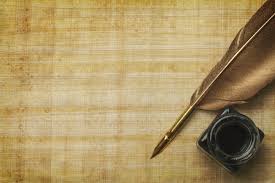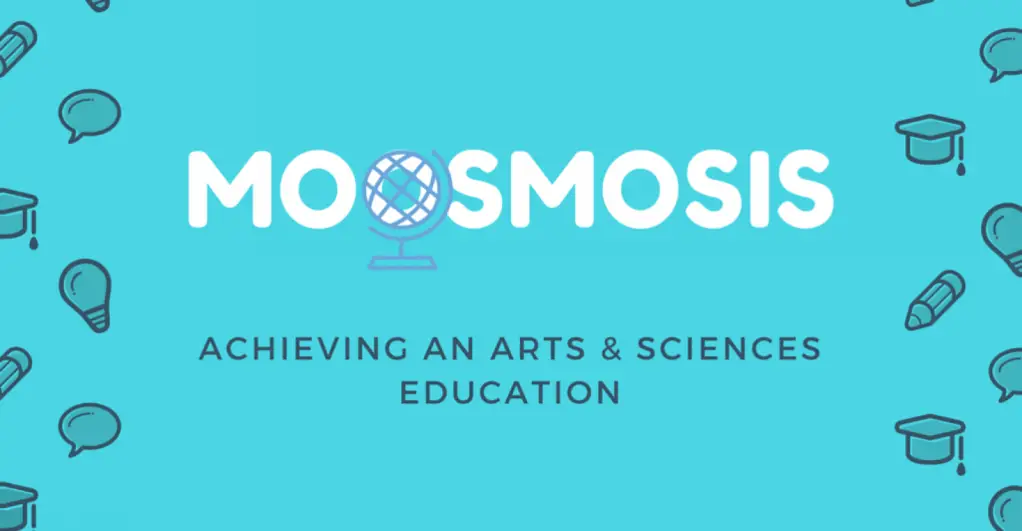Shorthand is the use of abbreviated spellings and or simplified symbols to record information in a quicker, more compact form. The opposite of this is longhand, which generally uses either block lettering or a cursive script. While it takes longer to fully write something out in longhand, all or most of those fluent in a given language will understand what is written down, as opposed to shorthand, which requires special training. In light of modern recording and word processing technologies, the decline in shorthand’s use seems inevitable, with newer inventions allowing those who only known longhand to reap the benefits of shorthand. And yet several shorthand systems thrive in a few niche industries. To fully appreciate shorthand and its resilience, one must go back to its origins.

The History of Shorthand
The first shorthand systems were developed in Egypt, Greece, and China prior to the 5th century CE, and were developed independently of each other. What this shows is that across continents people were seeking solutions to the same problems, and that they often found similar answers. Chief among the reasons to develop a shorthand was record keeping that could keep up with speech. Most if not all languages can be spoken faster than they can be written out in longhand. Cursive can speed up one’s penmanship, though in English this only affords about a ten percent increase in speed over print, which is not enough to catch up with a fluent speaker’s vocalizations. Monarchs’ legal decrees, court diviners’ proclamations, and philosophers’ lectures all necessitated the development of shorthand.
Types of Shorthand
When it comes to stenography, the practice of writing in shorthand, there are three main categories, at least when using the Latin alphabet. One is symbolic, where simple geometric shapes are used to represent letters, words, phrases, and phonemes. Phonemes are sounds units that are repeated and rearranged to create words and phrases. Examples in English include the speech sounds of “c” in cut and the “ch” in cheap.

Timothy Bright developed a symbolic system in 1588 where arrangements of lines, circles, and semi-circles could be used to take quicker notations. While these systems are quite efficient at taking down words of simple to average complexity, they struggle with speech containing rarer words. They are also comparatively difficult and time-consuming to learn.
The other two main bases for shorthand systems are orthography and phonetics. Orthography is concerned with the proper spelling conventions of languages, thus orthographic shorthands are those centered around maintaining the actual spelling of words. Dr. Henry Sweet’s Current Shorthand exemplifies this approach with its redesigned characters of the Latin alphabet. Current Shorthand modifies each letter, simplifying the motions required to render it, so as to cut down on time spent penning each letter and the time spent moving the pen between letters. For instance, both “a” and “i” are half circles, relying on elevation above the line to differentiate them. “K” and “p” operate under this same principle, though are drawn with just a vertical line. Phonetic systems often simplify their characters as well, but focus on how words sound over how they are traditionally written.

Phonetic spelling, writing out words as they sound, is the last major type of shorthand, and serves as the basis for most systems still in use today. Many shorthand systems are named after those who devised them. Sometimes this is a more casual way of referring to a system, though often it is encouraged by the founder. Many of the modern shorthand systems were designed as business and administrative aids, technologies akin in spirit to the spreadsheet. In these situations, naming a system after oneself was a branding decision.

Originally called Stenographic Sound-Hand, Sir Isaac Pitman’s phonetic shorthand was published in 1837, and still remains in use today, though under the shorter name Pitman. Pitman’s characters, which consist of strokes, dashes, dots, hooks, and other shapes are based on speech sounds rather than letters. Similar to Current Shorthand, elevation above a line can be used to indicate vowels when they are left out of a word, as it is often quicker to write just the consonant sounds of a word and leave the reader to later infer the vowels. Thickness and thinness of lines are used to differentiate between certain sounds, where the same shape can potentially be two different consonants and its thickness indicates which. Benn Pitman, Isaac’s brother, brought a modified version of Pitman Shorthand to North America, shopping it around until it became one of the more popular system in both the United States and Canada. It should be noted that these categories are not exclusive. Most shorthand systems use symbols for their characters, with the larger distinction being whether a shorthand is orthographic or phonetic.
What of machines though? Before audio recording technology was widely affordable and portable, typewriters had become a mainstay in offices and academia. While most shorthand systems were developed with pens and pencils in mind, Emma Dearborn’s Speedwriting was meant for use on typewriters, though later it was also adapted for hand writing. If technological advances in stenography had not posed such a threat to traditional shorthand, no one would have bothered to devise such a system. While not the most complex shorthand system, Speedwriting still took several weeks to learn. As advancements in technology marched on, shorthand went from being a secretarial necessity to a rarity.

Shorthand: Then and Now
In many fields the need for people to take down dictation has decreased. With the ability to record audio, which is instantaneous and easily transferable, stenography began to automate and combine with others roles. Secretaries of the past were generally expected to know some form of shorthand, though today many get by with keyboards and touch typing. Email too has lessened the need for abbreviated scripts by lessening the hurdles to long-distance communication. Where in the past a boss might have asked a secretary to take down what they were saying to be sent elsewhere, now the vast majority of managers will simply broadcast their thoughts themselves.
Yet in some fields, stenography remains the easier option. For example, legal systems depend on such written records. Rules and precedents, which often take the form of textual documents, are the bedrock of most judicial bureaucracies. Lawyers, judges, and clients deal in complex legal codes, and while evidence binders stuffed with hundreds of pages might seem arcane to some, this style of documentation serves a practical purpose. Whether in sports or an argument, a set of agreed upon rules are necessary for the outcome of a competition between two or more parties to be considered fair. Having textual documents as the foundation of a judiciary provides this level playing field. And while audio files may be easier to capture, they are generally less searchable then text, and details big and small can be equally important in a court setting.
Court reporters meet this demand by reproducing what is said during trials and other proceedings in a textual form. Most rely on stenotypes, word processors with keys that stand-in for more than one letters. As with other shorthand systems, stenotypes require special training to use, but they also allow stenographers to keep up with active conversations, unlike the majority of keyboard-bound typists.
Medicine is another profession where shorthand lives on. The scientific names of ailments and their cures are often long due to the complexity of the profession. Human bodies are complicated, and so it is no surprise that there are a myriad of ways they can come to harm or otherwise break down. Medical shorthand is most commonly used to communicate diagnoses among caregivers and for prescribing pharmaceuticals. This saves time in a field where seconds can make the difference between life and death, though of course the stakes are not always so high.
Shorthand is a technology. While newer tools have replaced it in most fields, it appears that for the foreseeable future stenography will live on in a few professions. Whether a niche is ecological or professional, those keenly suited to certain habitats will usually thrive.

Works Cited
Hollier, Dennis. “How to Write 225 Words Per Minute With a Pen”. theatlantic.com, The Atlantic, June 24 2014, http://www.theatlantic.com/technology/archive/2014/06/yeah-i-still-use-shorthand-and-a-smartpen/373281/, Accessed May 15
Russon, Allien R. “Shorthand”. britannica.com, ENCYCLOPÆDIA BRITANNICA, http://www.britannica.com/topic/shorthand, Accessed May 15 2020
“Shorthand”. omniglot.com, Omniglot, omniglot.com/writing/shorthand.htm, Accessed May 16 2020
“Use of Codes, Symbols, and Abbreviations”. jointcommissioninternational.org, Joint Commission International, http://www.jointcommissioninternational.org/en/standards/hospital-standards-communication-center/use-of-codes-symbols-and-abbreviations/, Accessed May 17 2020
Copyright 2020 Moosmosis – All rights reserved
All rights reserved. This essay or any portion thereof
may not be reproduced or used in any manner whatsoever
without the express written permission of the publisher.

Please Donate and Like our Facebook page to support! 🙂
Categories: Biology, Creative Writing, education, History, humanities, Literature, medicine, Social Studies, Uncategorized













Fantastic essay on shorthand!!
LikeLike
Interesting! learned something new about shorthand today.
LikeLike
Great article on shorthand
LikeLike
Amazing article! We’re doing shorthand in class
LikeLiked by 2 people
Amazing shorthand. I have this subject in school… And this is really interested…
LikeLiked by 1 person
I learned Diamond Jubilee and Gregg style shorthand
Very interesting.
LikeLiked by 1 person
Wow, that’s fantastic! 🙂
LikeLiked by 1 person